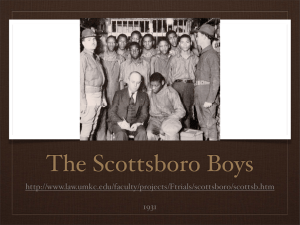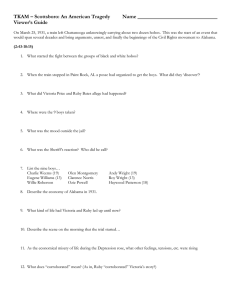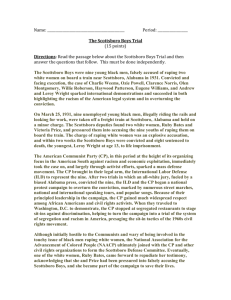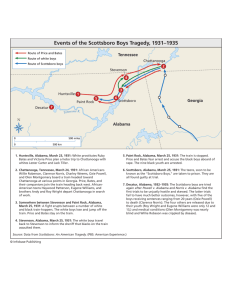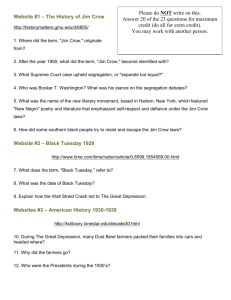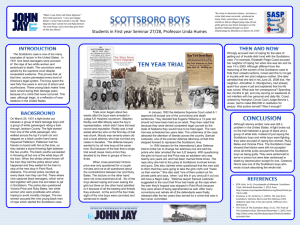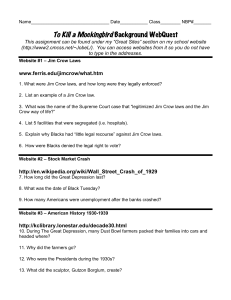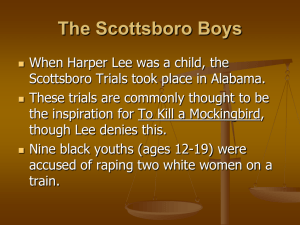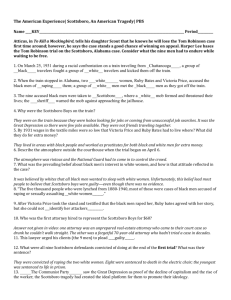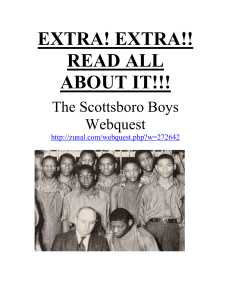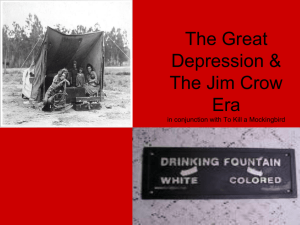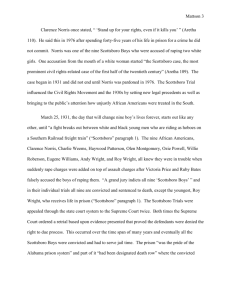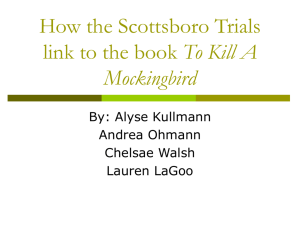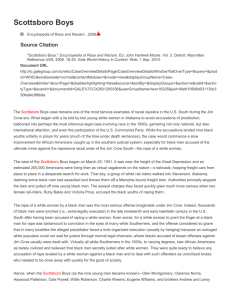The Scottsboro Boys 1931 - 1937
advertisement
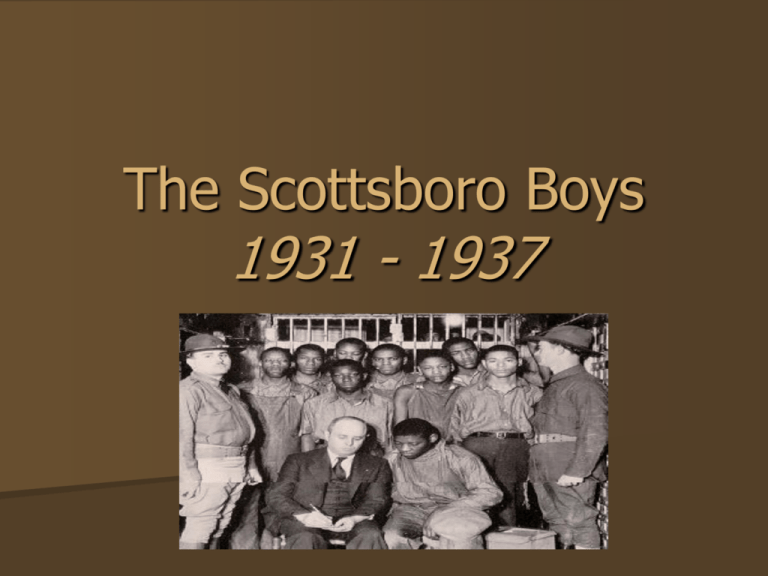
The Scottsboro Boys 1931 - 1937 Introduction Nine black teenagers on the Southern Railroad freight run from Chattanooga to Memphis on March 25, 1931 were allegedly accused of raping two white women by the name of Ruby Bates and Victoria Price . After three days all nine men were found guilty: eight, including two aged 14, were sentenced to death and the youngest man of 13 years of age sentenced to life imprisonment. Social and Political Issues The Nine African-American Boys Eugene Williams, Haywood Patterson, Charles Weems, Clarence Norris, Andy Wright, Ozzie Powell, Olen Montgomery, Roy Wright, and Will Roberson were all found guilty due to racial, social, and political discrimination. They were convicted guilty for a crime they did not commit due to the color of their skin, they had no chance going against an all white juror and being defended by two amateurs of white drunken lawyers. The prosecutor told the jury,” Guilty or not, let’s get rid of these niggers.” The court exercised a social and political injustice by falsely convicting the nine innocent boys. It was their word against two white women words. Since the arrest of the Scottsboro Boys, anger and dismay grew across the United States and in other parts of the world. People were angry over what appeared to be racially motivated arrests and prosecution of the boys. Supporters of the Scottsboro Boys occurred outside a number of U.S. embassies in Europe and in 110 American cities, ranging from 300,000 black and white workers gathered to protest the convictions on May 1. The Trials and Appeals The Communists party stepped in and with the International Labor Defense, presented Samuel Leibowitz. Samuel Leibowitz was one of the country’s premiere defense attorneys ,”the new Clarence Darrow.” Liebowitz had represented seventy-eight persons charged with first-degree murder. He had a remarkable record over a period of seventy-seven acquittals, no convictions , and one hung jury. The Scottsboro Boys case was appealed because Alabama had denied the defendants proper legal representation or due process guaranteed by the Fourteenth Amendment. Rubie Bates later on testified at the second trial that the rape story had been invented by Victoria Price and the crime had not taken place, but the men were once again found guilty. A third trial followed up and ended with the same results ,”Guilty!” The fourth trial in January, 1936, resulted in four of the men being acquitted. During the 1940s, four more were released ,except for one by the name of Andy Wright. Wright had to wait until the 9th of June, 1950, before he could be freed. The Scottsboro Boys case lasted nineteen years and two months after the nine boys arrest in Alabama. The nine men were finally pardoned in October, 1976. Only one of the men, Clarence Norris, who had spent 15 years in prison for the crime, was still alive. Cinematography •The Scottsboro Boys with Leibowitz in Jail •The Scottsboro Boys with National Guard(3/26/31) •Ruby Bates and Victoria Price 1931 •Four of the Boys with Leibowitz after release 7/25/37 Impact of Film The Scottsboro Boys film impacted me in a tremendous way. After viewing the film, I became more aware of the injustice that my ancestors faced during the days of segregation and racial discrimination. The film have taught to be more grateful and not to take things for granted. It is because of the hard work that my fellow African-Americans accomplished, that I am now able to have equal rights as guaranteed by the Constitution.
